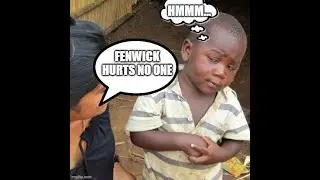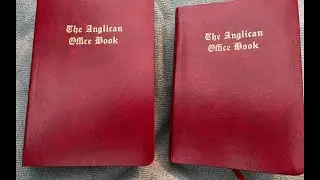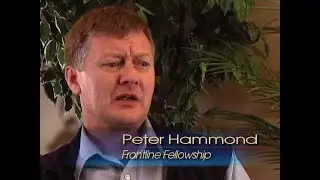UPDATE (#98): Bp. "Sola Fenwickia": (FCE): FCE and Free Masons and British Israelites (#1)
FREE MASONS, FENWICK, FCE. ABC Welby and ABC George Fisher had Masonic connections. The FCE is "rife" with Masons. Fenwick claimed his father was a Mason but declined membership himself. But, Fenwick's credibility is "shot." Why has Free Masonry been allowed to flourish?
The Report
Introduction
At the ninth General Assembly of the Orthodox Presbyterian Church, meeting at Rochester, New York, June 2-5, 1942, the Committee on Secret Societies presented its report. The Assembly instructed the Committee to send this report to the ministers and sessions of the Church for their study. The report deals with a matter of such timely importance that the Committee on Christian Education has decided to publish it in its series of "Tracts for Today."
I. Preliminary Considerations
1. Masonry and Other Secret Organizations
The mandate given this committee speaks of oath-bound secret societies in general. The committee frankly admits that it has not attempted a detailed investigation of all such societies. To accomplish that would have required even more time than was devoted to the preparation of this report, and much more time than the members of the committee had at their disposal. It may also be doubted whether so comprehensive an investigation is necessary. In the main the committee has restricted its study to that society which is known as the Ancient Order of Free and Accepted Masons. It should be borne in mind that Freemasonry, which is the oldest of the larger secret orders in this country, is generally admitted also to be their mother. Such popular orders as the Benevolent and Protective Order of Elks, the Knights of Pythias, the Loyal Order of Moose, the Independent Order of Odd-Fellows, the Improved Order of Red Men, the Woodmen of the World and the Order of the Eastern Star are all of them in many ways similar to their earlier prototype, the Masonic order. Their rituals, secrets, terms of membership, objects and purposes have in varying degree characteristics like those of Masonry. It follows that, if the objections which have been taken to Masonry are well taken, then these same objections apply also in the main to the other orders mentioned and to whatever smaller orders of similar character may exist.
2. Is Reliable Information Available?
An objection frequently raised to any study of secret orders by non-members takes the form of the statement: You cannot get any reliable information. It may be said categorically that, in the case of the major orders, particularly the Order of Free and Accepted Masons, this statement is not correct. Reliable information concerning all points of major importance, and concerning many others that are not important, is accessible to any who will make a proper study of the matter.
The so-called secrets of Masonry constitute only a portion of the total activity of the order. The general ideals of Masonry and the history and philosophy of the order have been developed by numerous Masonic and non-Masonic writers in books designed for the general public as well as for Masons. Of course, even Masonic writers do not always agree fully with one another about these matters, but that is true of any field of research. On the whole the agreement among them is striking.
Much of the Masonic ritual is of a non-secret character, and handbooks concerning speeches, statements, prayers and similar matters are published without secrecy. A great mass of useful information concerning the relationship of the order to Christianity is available from volumes of this character.
Further, the so-called ceremonies, grips, passwords and such matters are very largely available through printings by recognized Masonic publishing houses in cipher code. These cipher codes, at least some of them, are not difficult to read. They can be used as original sources of information, and also as checks by which to determine the accuracy of the plain English rituals which have been published by non-Masonic sources. Among the texts and descriptions published by such sources are those emanating from individuals who, for one reason or another, have demitted their membership in the Masonic order. When their evidence agrees with that from Masonic sources something of a check in both directions is provided. This committee has had the privilege of personally interviewing and questioning a former member of the Masonic order who was anxious to provide as much information as desired about the body.
It is worth noting that a Mason, Eugen Lennhoff, who has written one of the most comprehensive and well-balanced books about Masonry, admits that the signs, words and grips, and copies of the Ritual and explanations of the symbols, are obtainable by anyone (The Freemasons, p, 18). And in his Introduction to Free Masonry, Carl H. Claudy, also a Mason, says: "There is no obligation of secrecy regarding the truths taught by Freemasonry, otherwise such a book as this could not lawfully be written" (vol. I, p. 34).































